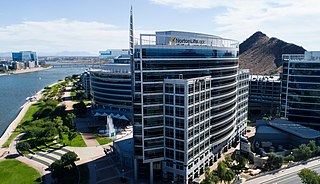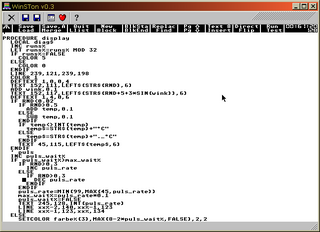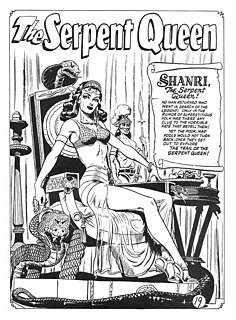A quality management system (QMS) is a collection of business processes focused on consistently meeting customer requirements and enhancing their satisfaction. It is aligned with an organization's purpose and strategic direction. It is expressed as the organizational goals and aspirations, policies, processes, documented information, and resources needed to implement and maintain it. Early quality management systems emphasized predictable outcomes of an industrial product production line, using simple statistics and random sampling. By the 20th century, labor inputs were typically the most costly inputs in most industrialized societies, so focus shifted to team cooperation and dynamics, especially the early signaling of problems via a continual improvement cycle. In the 21st century, QMS has tended to converge with sustainability and transparency initiatives, as both investor and customer satisfaction and perceived quality are increasingly tied to these factors. Of QMS regimes, the ISO 9000 family of standards is probably the most widely implemented worldwide – the ISO 19011 audit regime applies to both and deals with quality and sustainability and their integration.
The ISO 9000 family of quality management systems (QMS) is a set of standards that helps organizations ensure they meet customer and other stakeholder needs within statutory and regulatory requirements related to a product or service. ISO 9000 deals with the fundamentals of QMS, including the seven quality management principles that underlie the family of standards. ISO 9001 deals with the requirements that organizations wishing to meet the standard must fulfill.

NortonLifeLock Inc., formerly known as Symantec Corporation is an American software company headquartered in Tempe, Arizona, United States. The company provides cybersecurity software and services. NortonLifeLock is a Fortune 500 company and a member of the S&P 500 stock-market index. The company also has development centers in Pune, Chennai and Bangalore.

Theo de Raadt is a South African-born software engineer who lives in Calgary, Alberta, Canada. He is the founder and leader of the OpenBSD and OpenSSH projects and was also a founding member of NetBSD. In 2004, De Raadt won the Free Software Award for his work on OpenBSD and OpenSSH.
The Alliance for Audited Media (AAM) is a North American non-profit industry organization founded in 1914 by the Association of National Advertisers to help ensure media transparency and trust among advertisers and media companies. Originally known as the Audit Bureau of Circulations (ABC), today AAM is a source of verified media information and technology platform certifications, providing standards, audit services and data for the advertising and publishing industries. It is one of more than three dozen such organizations operating worldwide, affiliated with the International Federation of Audit Bureaux of Circulations (IFABC).
Bev Harris is an American writer, activist, and founder of Black Box Voting, a national, nonpartisan elections watchdog group. She helped popularize the term "black box voting", while authoring a book of that title.

The United States five-dollar bill ($5) is a denomination of United States currency. The current $5 bill features a portrait of Abraham Lincoln, the 16th U.S. president (1861-1865), on the front and the Lincoln Memorial on the back. All $5 bills issued today are Federal Reserve Notes.

The EURion constellation is a pattern of symbols incorporated into a number of secure documents such as banknotes and ownership title certificates designs worldwide since about 1996. It is added to help imaging software detect the presence of such a document in a digital image. Such software can then block the user from reproducing banknotes to prevent counterfeiting using colour photocopiers.

GFA BASIC is a dialect of the BASIC programming language, by Frank Ostrowski. The name is derived from the company, which distributed the software. In the mid-1980s to the 1990s it enjoyed popularity as an advanced BASIC dialect, but has been mostly superseded by several other programming languages. Official support ended in the early 2000s.
Remaster refers to changing the quality of the sound or of the image, or both, of previously created recordings, either audiophonic, cinematic, or videographic. The terms digital remastering and digitally remastered are also used.

In comics, a colorist is responsible for adding color to black-and-white line art. For most of the 20th century this was done using brushes and dyes which were then used as guides to produce the printing plates. Since the late 20th century it is most often done using digital media, with printing separations produced electronically.
Balzac is a hamlet in Rocky View County, which is in the Calgary Metropolitan Region of the Canadian province of Alberta. It is located immediately west of Queen Elizabeth II Highway, at the intersection with Highway 566, 24 km (15 mi) north of Calgary city centre and 12 km (7.5 mi) south of Airdrie.

Accounting software is a computer program that maintains account books on computers, including recording transactions and account balances. It may depends on virtual thinking. Depending on the purpose, the software can manage budgets, perform accounting tasks for multiple currencies, perform payroll and customer relationship management, and prepare financial reporting. The first accounting software was introduced in 1978. Since then, the accounting software has revolutionized from supporting basic accounting operations to performing real-time accounting and supporting financial processing and reporting. Cloud accounting software was first introduced in 2011, and it allowed to perform all accounting functions through the internet.
Acceleware Ltd. is a Canadian innovator of clean-tech oil and gas technologies composed of two business units: Radio Frequency (RF) Enhanced Oil Recovery and Seismic Imaging Software. The Company is currently running a commercial-scale, RF XL pilot project at Marwayne, Alberta, Canada to advance and validate its heavy oil and oil sands electrification technology. Acceleware's seismic imaging software solutions offers imaging for oil exploration in complex geologies.

A photocopier is a machine that makes copies of documents and other visual images onto paper or plastic film quickly and cheaply. Most modern photocopiers use a technology called xerography, a dry process that uses electrostatic charges on a light-sensitive photoreceptor to first attract and then transfer toner particles onto paper in the form of an image. The toner is then fused onto the paper using heat, pressure, or a combination of both. Copiers can also use other technologies, such as inkjet, but xerography is standard for office copying.
Replicon is a California-based software-as-a-service (SaaS) company that makes software for time tracking, advanced project management, task collaboration, resource allocation, and professional services automation. Replicon’s online timesheets and cloud clock are an alternative to paper timesheets or punch cards.
A potentially unwanted program (PUP) or potentially unwanted application (PUA) is software that a user may perceive as unwanted or unnecessary. It is used as a subjective tagging criterion by security and parental control products. Such software may use an implementation that can compromise privacy or weaken the computer's security. Companies often bundle a wanted program download with a wrapper application and may offer to install an unwanted application, and in some cases without providing a clear opt-out method. Antivirus companies define the software bundled as potentially unwanted programs which can include software that displays intrusive advertising (adware), or tracks the user's Internet usage to sell information to advertisers (spyware), injects its own advertising into web pages that a user looks at, or uses premium SMS services to rack up charges for the user. A growing number of open-source software projects have expressed dismay at third-party websites wrapping their downloads with unwanted bundles, without the project's knowledge or consent. Nearly every third-party free download site bundles their downloads with potentially unwanted software. The practice is widely considered unethical because it violates the security interests of users without their informed consent. Some unwanted software bundles install a root certificate on a user's device, which allows hackers to intercept private data such as banking details, without a browser giving security warnings. The United States Department of Homeland Security has advised removing an insecure root certificate, because they make computers vulnerable to serious cyberattacks. Software developers and security experts recommend that people always download the latest version from the official project website, or a trusted package manager or app store.
The Canadian Energy Centre Limited (CEC), also commonly called the "Energy War Room", is an Alberta provincial corporation mandated to promote Alberta's energy industry and rebut "domestic and foreign-funded campaigns against Canada's oil and gas industry". The creation of an organization to promote Alberta's oil and gas industries was a campaign promise by United Conservative Party leader Jason Kenney during the 2019 Alberta general election. After winning a majority of seats in the election, Kenney's government inaugurated the CEC with a $2.84 million budget in December 2019. The CEC originally had an annual budget of CA$30 million which was decreased to $CA12 million. The CEC has been the subject of several controversies since its establishment, including accusations of plagiarizing logo designs. The CEC attracted widespread media attention when it launched a campaign against the Netflix animated children's movie Bigfoot Family because it cast Alberta's oil and gas industry in a negative light.
Benevity is a Calgary-based company that provides charitable donation-management and grant-management platforms. Benevity is one of Western Canada's largest startups. Its customers include Nike, Coca-Cola, Google, and Apple, and about 250 of the Fortune 1000 as of 2017.

Telus Corporation is a Canadian multinational publicly traded holding company and conglomerate, headquartered in Vancouver, BC, which is the parent company of subsidiaries—Telus Communications, Telus Mobility, Telus Health, Telus Agriculture and Telus International. Telus offers a range of telecommunications, health, safety, and security products and services. It is listed with the Toronto Stock Exchange. Telus Communications Inc. offers telephony, television, data and Internet services; Telus Mobility, offers wireless services; Telus Health operates companies that provide health products and services; and Telus International operates worldwide, providing multilingual customer service outsourcing and digital IT services.








